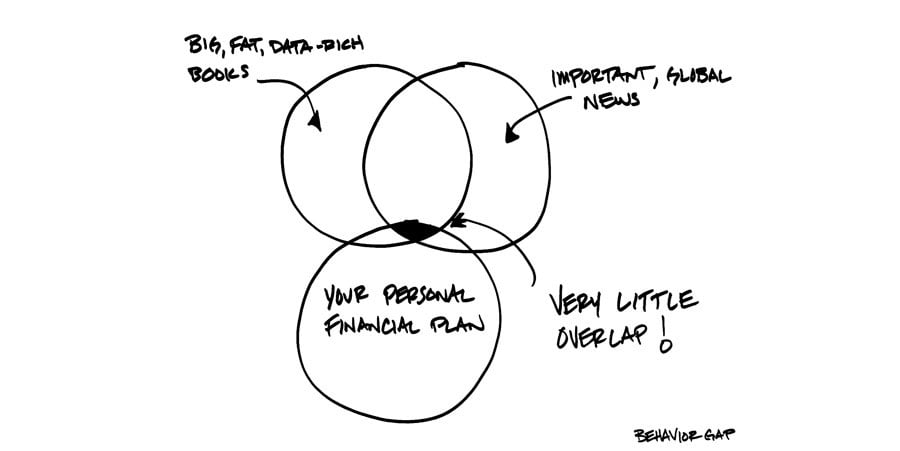Over the last few years, I've spent a lot of time traveling and talking to people. During that time, I've been running a mini experiment, and it's based on a simple question: When was the last time you read some financial news that you acted on and then were glad you acted on it?
This question stumps most people. Unless they're concerned with following the latest changes in tax law, there's little value to be had in much of what passes for financial journalism. It's a lot of noise dedicated to grabbing our time and attention. But for most clients, it's just distracting them from everything else that should be more important to them.
There's a valuable role for us to play as real financial advisers, that of the human curator. Do our clients really need to spend hours sorting through their feeds and trying to decode the headlines or could we be doing that for them? What should they be paying attention to?
For instance, one friend shared with me that when he turned off the financial news spigot, he calculated that he saved two to three hours every night. Do the math and it ends up being a savings of 40 or so days each year. Even if you cut that in half, it's still 20 more days in a year to do something else besides trying to translate the noise masquerading as financial news.
By becoming a human curator, you can solve a massive problem for your clients. I've often referred to it as helping people detox from financial pornography. After all, people think it's their job to pay attention to it, sort through it and act on it. But it's not.
It can take time and patience, and some clients may resist it in the beginning. (Remember, they think it's their job.) But they'll find that after working on it for a bit, they won't miss the news. They'll wake up one day and realize they've stopped obsessing. Just imagine being able to tell clients they can get back entire days. That's a huge value and you can offer it as a real financial adviser.
Carl Richards is a certified financial planner and director of investor education for the BAM Alliance. He's also the author of the weekly "Sketch Guy" column at the New York Times. He published his second book, "The One-Page Financial Plan: A Simple Way to Be Smart About Your Money" (Portfolio), last year. You can email Carl here, and learn more about him and his work at BehaviorGap.com.







